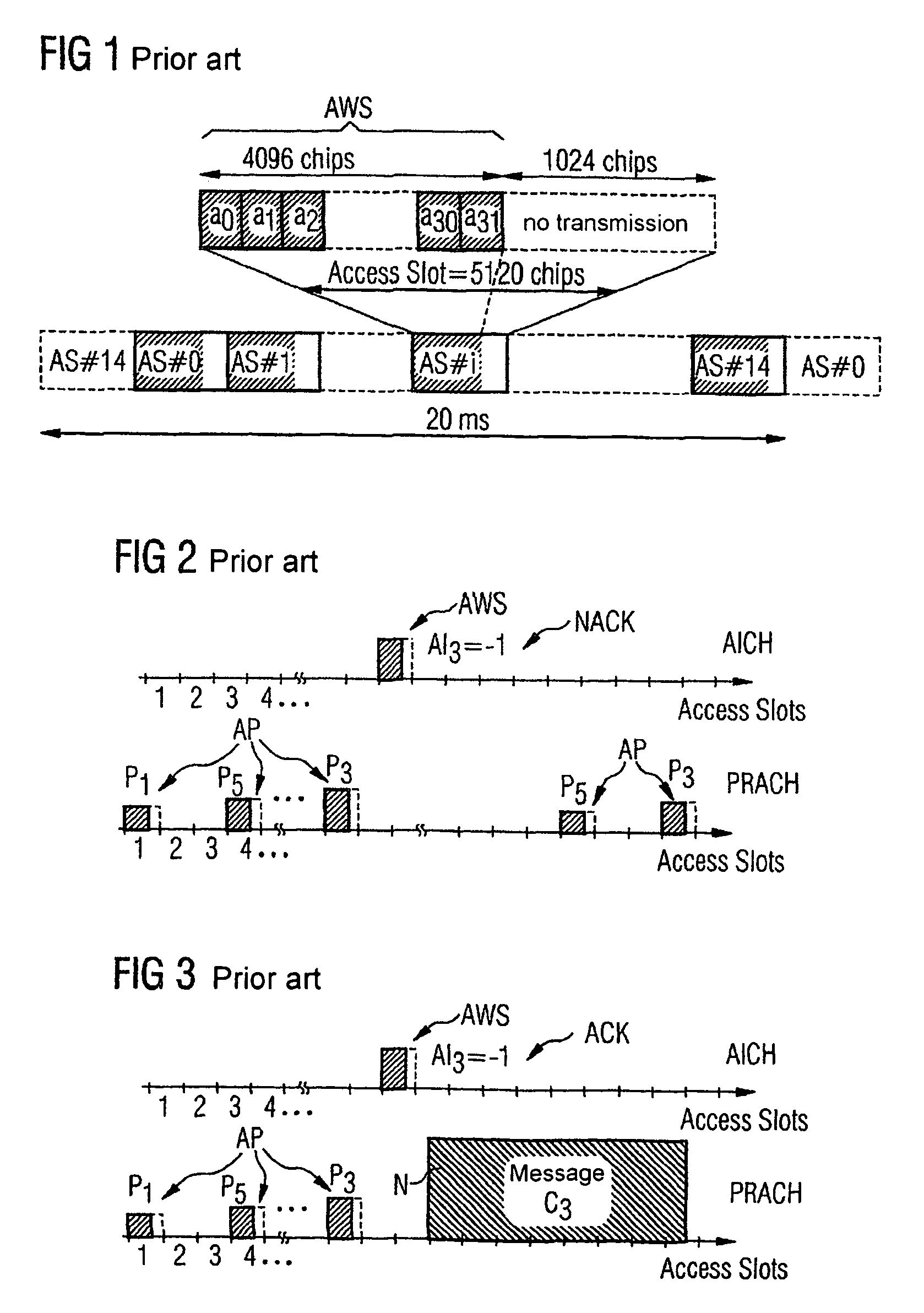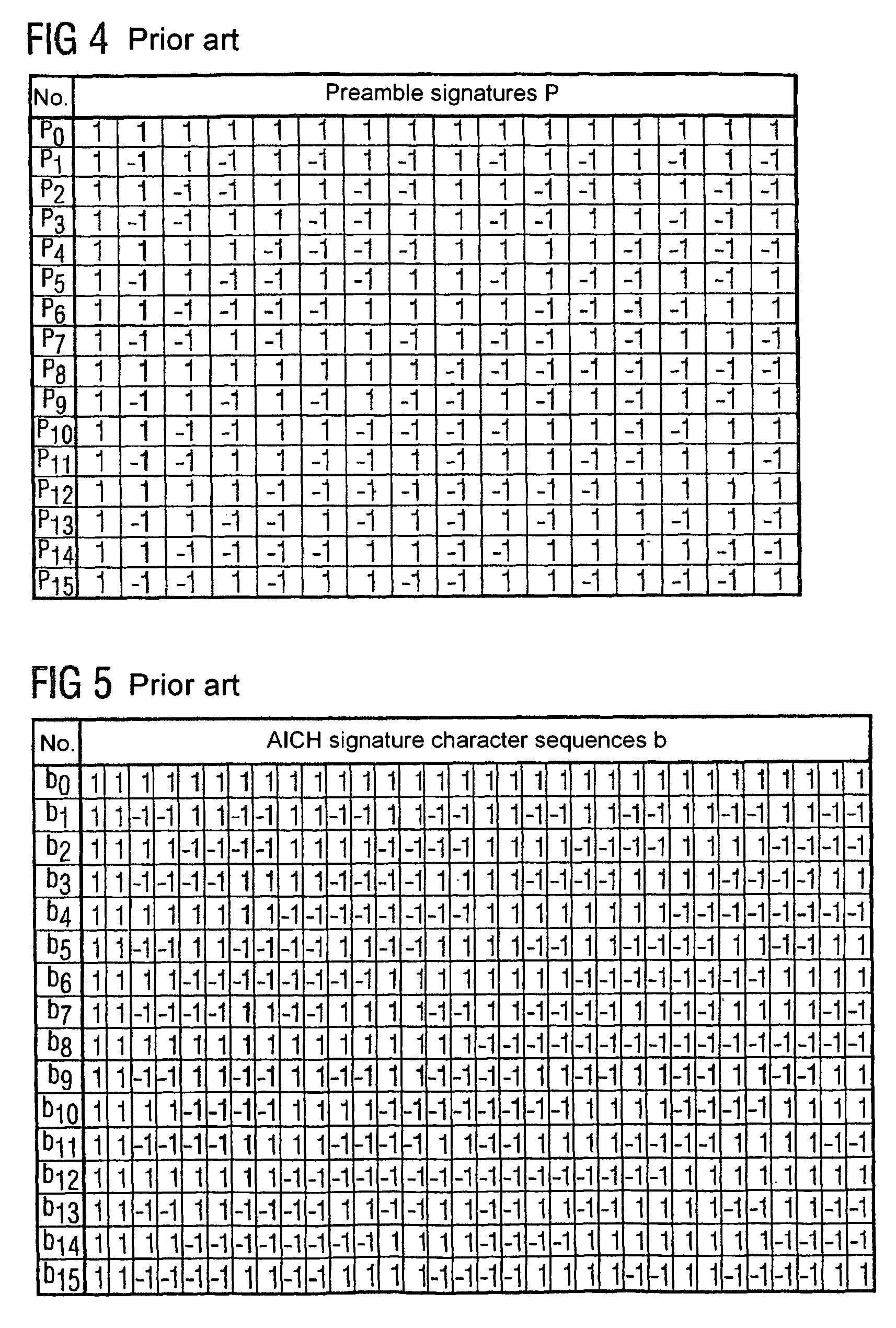Method for selection of an available transmission channel by sending a negative decision value and an additional positive decision value and corresponding base station, mobile terminal and mobile radio network
a transmission channel and decision value technology, applied in the field of transmission channel selection, can solve problems such as ineffective methods, and achieve the effects of reducing the overhead of signal transmission, facilitating transmission, and facilitating transmission
- Summary
- Abstract
- Description
- Claims
- Application Information
AI Technical Summary
Benefits of technology
Problems solved by technology
Method used
Image
Examples
Embodiment Construction
[0041] Reference will now be made in detail to the preferred embodiments of the present invention, examples of which are illustrated in the accompanying drawings, wherein like reference numerals refer to like elements throughout.
[0042] All exemplary embodiments of the invention shown in the drawings relate to an inventive improvement of the random access method in FDD Mode (Frequency Division Duplex-Mode) of the UMTS standard. The invention is not restricted to this application however.
[0043] In the UMTS mobile radio network a number of mobile radio devices can send simultaneously on one frequency in the uplink or will be serviced by one base station in the downlink. This is made possible in that, by using different spread codes which are orthogonal to each other, the bandwidth of a signal is spread and thus different physical channels are created on a frequency.
[0044] As already explained at the start there are dedicated channels in the UMTS standard, which are permanently assig...
PUM
| Property | Measurement | Unit |
|---|---|---|
| time | aaaaa | aaaaa |
| time | aaaaa | aaaaa |
| transmission | aaaaa | aaaaa |
Abstract
Description
Claims
Application Information
 Login to View More
Login to View More - R&D
- Intellectual Property
- Life Sciences
- Materials
- Tech Scout
- Unparalleled Data Quality
- Higher Quality Content
- 60% Fewer Hallucinations
Browse by: Latest US Patents, China's latest patents, Technical Efficacy Thesaurus, Application Domain, Technology Topic, Popular Technical Reports.
© 2025 PatSnap. All rights reserved.Legal|Privacy policy|Modern Slavery Act Transparency Statement|Sitemap|About US| Contact US: help@patsnap.com



